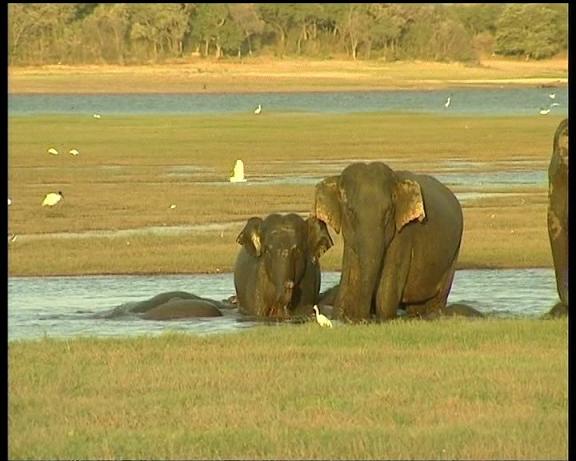
Minneriya National Park
 |
|
| INTRODUCTION |
Giant tanks and irrigation system have been built to utilize for cultivation. Out of the massive tanks built in Sri Lanka dowered with a long cultivate heritage symbolized by the tanks and the dagaba. Minneriya is second to none. The park is situated in Higurakgoda Divisional secretariet in the District of Polonnaruwa in the North Central Province. The total of the Park is 8889.411 hectares. Minneriya was declared as a National Park on the 12 th of August 1997 under the same ordinance opened for visitors in May 1998. Minneriya reservoir along with its surroundings, plays a vital role as a wetland, hence it has high biodiversity. |
| ACCESS | The park is located 182km from Colombo on the main road to Polonnaruwa via Habarana. The main entrance to the Park is situated at Ambagaswewa, 8.8km from Habarana on the Colombo Polonnaruwa road. After obtaining a permit from the Ambagaswewa wild life conservation office, one could enter the park. |
| PHYSICAL CHARACTERRISTICS | The topography is varied, with hills, patanas and talawas. Minneriya is an ancient irrigation tank, with a capacity of 22,550ha when full and a catchment area of 24,000ha. The main source of water is from a diversion of the Amban Ganga, along the Elahera channel. The park covers an area of 8,889ha. The altitude ranges from approximately 100m to 8,885m at the top of Nilgala peak. Condition is topical monsoon climate. Mean annual rainfall is about 1,146mm and mean annual temperature 27.5 ° C. |
| VEGITATION | The national park vegetation consists of tropical dry mixed evergreen forests, abandoned chena cultivated lands, grassland, and wetlands. |
| FAUNA | Twenty four (24) species of mammals in Sri Lanka have been reported from this park. The most important of them is the wild elephant (Elephant maximus) the population of which of about 150-200. Minnerya reservoir and its surrounding wetlands habitat is inhabited by large number of a aquatic bird species. Early morning and late evening are the optimum observation of the day for resident and migratory birds. Three species of fishes are endangered out of four endemic species recorded in the reservoir, while the introduced Thilapia species are dominant. |
Copyright© 2009 Department of Widlife Conservation in Sri Lanka



